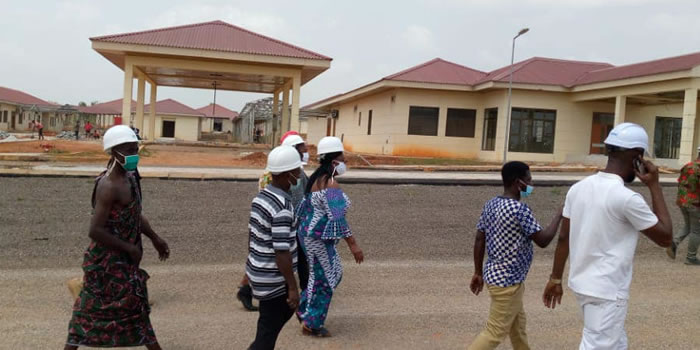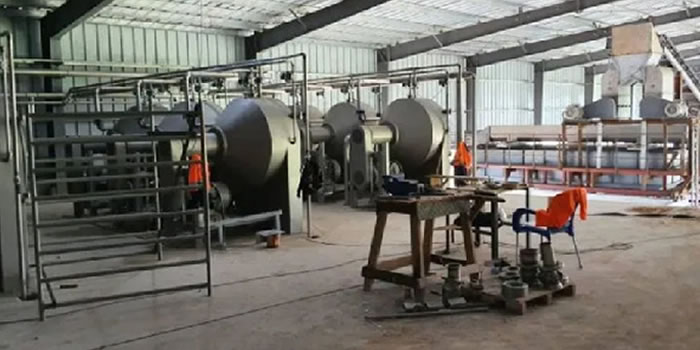

DEVELOPMENT GOAL, OBJECTIVES AND STRATEGIES
Introduction
The chapter three of the plan is in two parts. The first section is devoted to the assessing of the municipal focus. Efforts will also be made to identify the goal of the Municipal Assembly in relation to the NMTDPF and its level of compatibility with the national goal. Objectives and strategies have been evolved from the Municipal goal with guidance from the community needs and aspirations. The second part is devoted to a presentation on the development framework for the Municipal Assembly. This is basically the various projections within which the municipal assembly is expected to grow.
National Development Focus
The Medium Term Development Policy Frame work is directed at ensuring that the economy would have achieved the sustainable and accelerated value-added growth required to raise the per capita income.
The vision of government is to pursue an agenda of change for a ‘Better and Prosperous Ghana’. The strategic elements driving the above vision is:
Environment for accelerated employment creation
Accelerated agricultural modernization
Infrastructure expansion and modernization
Human Development, including a commitment to gender equity
Private Sector Development
Transparent and Accountable governance and
Financial mobilization including Public – Private Partnership (P.P.P)
The strategy will also entail:
Improved enabling environment to empower the private sector;
Active collaboration between the public and private sectors, including public-private partnerships
Active government interventions where appropriate;
Transparent and accountable governance and efficiency in public service delivery at all levels;
Effective decentralization for enhanced local economic development
Municipal Development Focus
The situational analyses of the municipality identifies very important community problems, needs and aspirations. These community problems needs and aspirations informed the identification of key development issues in the Municipality. After analyzing the potentials opportunities, constraints and challenges of the Municipality, the development focus will be on the following thematic areas.
Ensuring And Sustaining Macro Economic Stability
Ensuring Competitiveness In Ghana’s Private Sector
Accelerated Agricultural Modernization And Sustainable Natural Resource Management
Infrastructure, Energy And Human Settlement Development
Human Development, Productivity And Employment
Transparent And Accountable Governance
Municipality development Goal
The principal goal of the Municipality is to:
Create an enabling environment for the development and growth of the municipality through modernized agriculture, increased industrial activities, deepening decentralization within the framework of increased Public-Private Partnership in a clean, crime and violence free environment that offers adequate basic social services.
From the table above, it can be seen that the district development is highly compatible with the national goal. Therefore the successful implementation of the district goal will greatly contribute towards the realization of the national goal.
PROJECTIONS
Planning has been described as the “act of getting future things done” by this simple definition, it implies that efforts have to be made to see into the future by studying current trends. This section of the plan represents the overall framework within which future decisions can be taken. This section of the plan is the devoted to the estimation of variables. Under this section, projections have been made for all sectors of the Municipality under the guidance of the NMTDPF. This will form the frame work for development in the Municipality.
Demographic projections
Planning is for the people and by the people. In this respect, demography is a critical variable in planning, hence selected aspects which will inform future decisions have been projected. All planning activities are centered on man. Therefore population and its attributes are very important in all planning endeavors. The demographic characteristics of the Municipality has therefore been projected. Aspects of the population projected include:
Population (Total)
Population Density
Population Structure
Rural and Urban composition
Demographic projections have been made based on the following assumptions
That the population of the Municipality will grow at a rate of 2.7% per annum
That the percentage composition of the various age cohort will remain constant over the planned period
Land size of the Municipality will remain constant/
The rural /urban population composition will change from 68/32 To 80 / 20 as more communities become urbanize.
Municipal Projections
Over the years, population trend has assumed unpredictable characteristics in the municipality. Between 1970 and 1984 the then Asante Akim North Municipal Assembly had a growth rate of 2.8%. The growth rate between 1984 and 2000 was 3.0%. The Municipality is expected to grow at a rate of 2.7% during the planned period. The reduction in the growth rate could be as a result of the carving out of the Asante Akim North District from the municipality.
The table below shows that an increase in the municipality’s population is anticipated in the planned period coupled with a corresponding increase in the population per square kilometer (density). This invariably implies that demand for both public and private infrastructure will increase, all things being equal. There would also be more pressure on available land, which is in fixed quantity. There is therefore the need to make adequate provisions for infrastructure for the increasing population. Increase in population has a negative effect on the environment and this requires effective policies to cater for the environment.
Projections of Population Structure
Projections have been made for the population structure of the municipality with reference to:
a) Sex Composition
b) Age Structure
c) Broad age structure. The distribution of the population by sex and age is one of the most important demographic groupings. The importance of this projection is to make adequate provision for people of all age cohorts. As already indicated, the percentage composition of the structure is assumed to remain constant over the planned period.
The table below indicates the projections for sex structure and all age cohorts for the plan period. From the table below, male population is expected to reach 40,900 by 2017 and female population is also expected to reach 45,267 by the same period.
Date Created : 11/17/2017 6:43:00 AM










 facebook
facebook
 twitter
twitter
 Youtube
Youtube
 +233 593 831 280
+233 593 831 280 0800 430 430
0800 430 430 GPS: GE-231-4383
GPS: GE-231-4383 info@ghanadistricts.com
info@ghanadistricts.com Box GP1044, Accra, Ghana
Box GP1044, Accra, Ghana